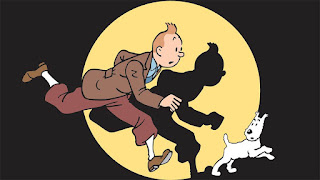The Adventures of Tintin
The Adventures of Tintin
- Madhubani
My elementary school Bengali grammar book said that
when we frame a sentence, it automatically forms an image in our mind. We
usually find it easier to register information when it’s associated with an
image. To put it in a nutshell, human expression finds its way through a
combination of words and images. And what better way to put them together than
a comic strip?
I was ten when an uncle happened to be clearing out his closet and he gifted me the complete collection of The Adventures of Tintin which he had compiled all his life - a rare stroke of luck I must say! Growing up, I remember drawing comic strips of my own. I had watched Tintin on cartoon network before and when I started reading, I had little idea about how amazing a series it is.
The Adventures of Tintin, created by Belgian
cartoonist Georges Remi under the penname Herge, is one of the most popular
Europian comics of the 20th century. Driven by a taste for mystery,
Tintin, a young journalist and his dog Snowy embark on various heroic
adventures some of which lead them right round the world. Often accompanying
them is Captain Haddock, a loud-natured retired sailor whose iconic curses
“Blistering barnacles!” and “Thundering typhoons!” are synonymous with the
Tintin series. Various iconic characters like the twins Thomson and Thompson,
Professor Calculus, General Alcazar, Jolyon Wagg ,Rastapopoulos and Bianca Castafiore make
repeated appearances at various points in the series.
What makes Tintin so unique? Maybe it is the realistic
style of drawing that forms an important aspect of any comic strip. Maybe it is
the absolutely mind-boggling and neat storyline of each book and the humorous
comic timing of characters that make them an interesting read. For me though,
what is most fascinating about Tintin is the touch of reality. Herge has
focussed on social issues such as the opium racket in China, South American
politics, mafias in the film industry etc while creating this series. This is
where Tintin breaks its classification as a mere piece of children’s
literature. To the mind of a child of ten or twelve, it opens up a window to
the world!
In the world of reading, I feel, comic strips are an
underrated gem. The Adventures of Tintin not only make up a classic piece of
literature but also serve as a profound source of general knowledge! No matter
how good Tintin may look in cartoons and movie adaptations, the comic strip
continues to be on my list of must-reads!





Favorite one... Well written.. ❤️
ReplyDelete